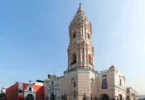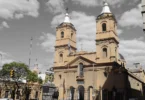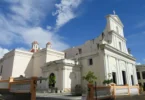Introduction
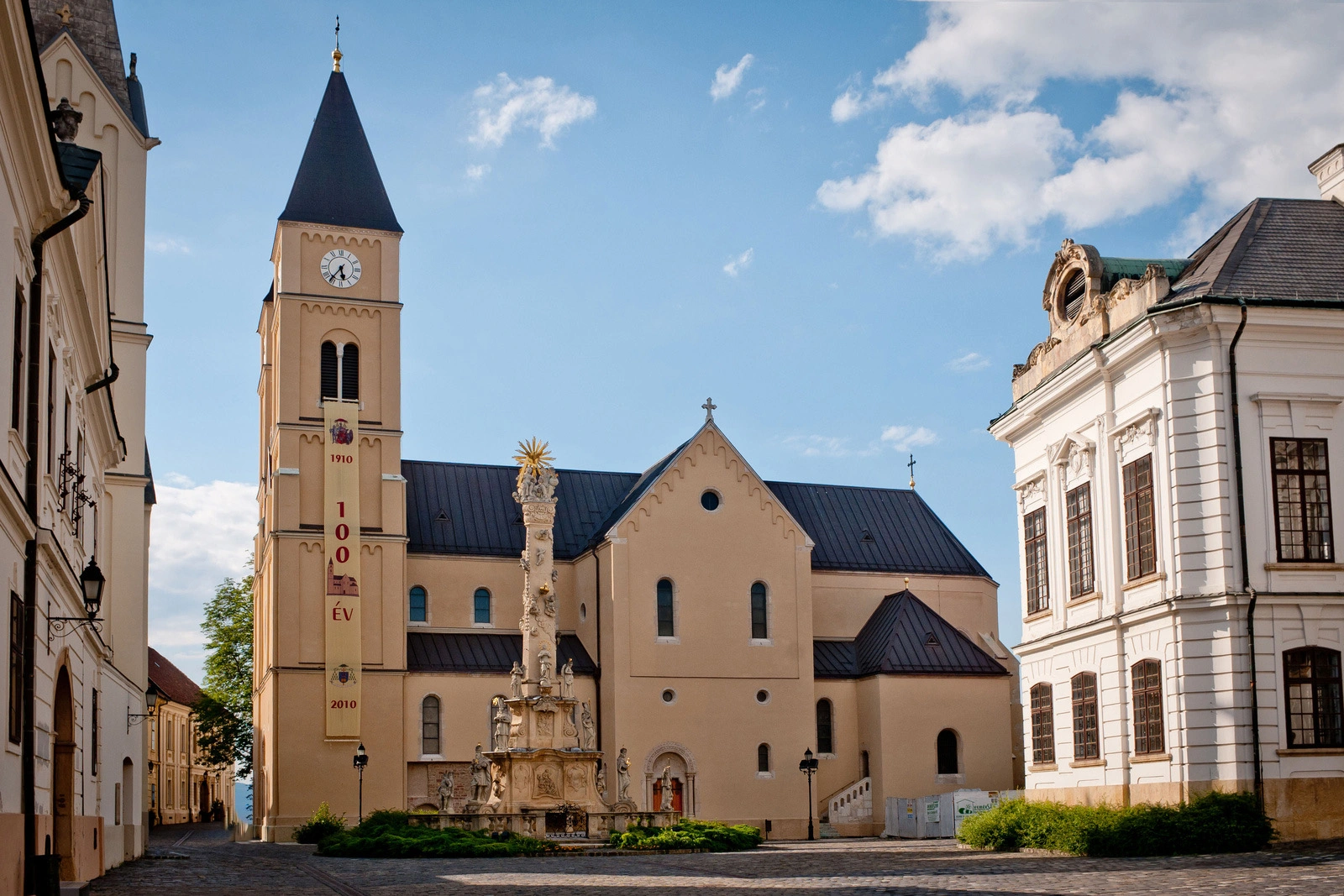
St. Michael’s Cathedral, also known as Veszprem Cathedral, is one of the most important churches in Hungary. It’s the main church of the Archdiocese of Veszprém and has a long history that goes all the way back to the founding of the Hungarian state. In fact, it’s considered the oldest cathedral in the country. Over the centuries, the building has gone through a lot of changes. The version we see today was completed in 1910 and features a neo-Romanesque style. It is on the north side of Szentharomsag Square, up in the castle area. The city’s skyline is dominated by the two towers, which can be seen from numerous locations around Veszprém. In 1981, the church was officially granted the title of basilica. It is now more than just a religious site; it is also an important part of the city’s identity and a reminder of the city’s long history.
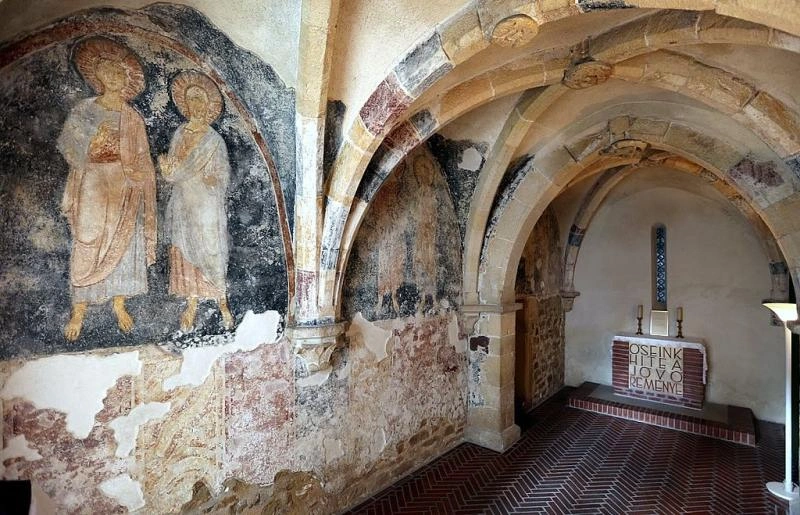
Founding
During the time of Prince Geza, there was already a small, round church known as a rotunda up in the northern portion of the present basilica. Its layout doesn’t line up with the cathedral or octagonal chapel that came after it, so you can tell it’s really old. It most likely began as a private chapel. After the war with the Bulgarians, it may have become the place where relics of Saint George were kept and venerated, which is likely how it got its name. A palace was also attached to the rotunda from the north during the rpad era. Some say it was Prince Geza’s residence, others think it might’ve been Hungary’s first bishop’s palace. In either case, it demonstrates the site’s prior significance. The first reference to the church can be found in the founding charter of Pannonhalma, which was written in 1001, and subsequent records continue to refer to it as Hungary’s oldest cathedral. Many people think that Queen Gisela, King Stephen’s wife, helped start or at least support the cathedral, despite the lack of solid evidence. Because of this connection, Veszprem became known as the “city of queens” in the end. A medieval legend about King Stephen even talks about how Queen Gisela donated crosses, vessels, vestments basically everything the church needed and especially helped the Veszprem cathedral from its very first stone. The cathedral’s patron saint is St. Michael, the archangel who leads heaven’s armies. Some think that’s because the church had to play a big role in converting locals to Christianity which wasn’t always a peaceful process. During that time, parts of what is now Somogy County belonged to the Veszprem diocese. Those parts were still devoted to chieftain Koppany, who was a major rival of King Stephen. Additionally, the Basilica of the Assumption in Veszprém has a well-known coronation robe that depicts Queen Gisela holding a miniature church model. It’s tempting to think it’s this cathedral, but most historians think it’s the Szekesfehervar basilica.
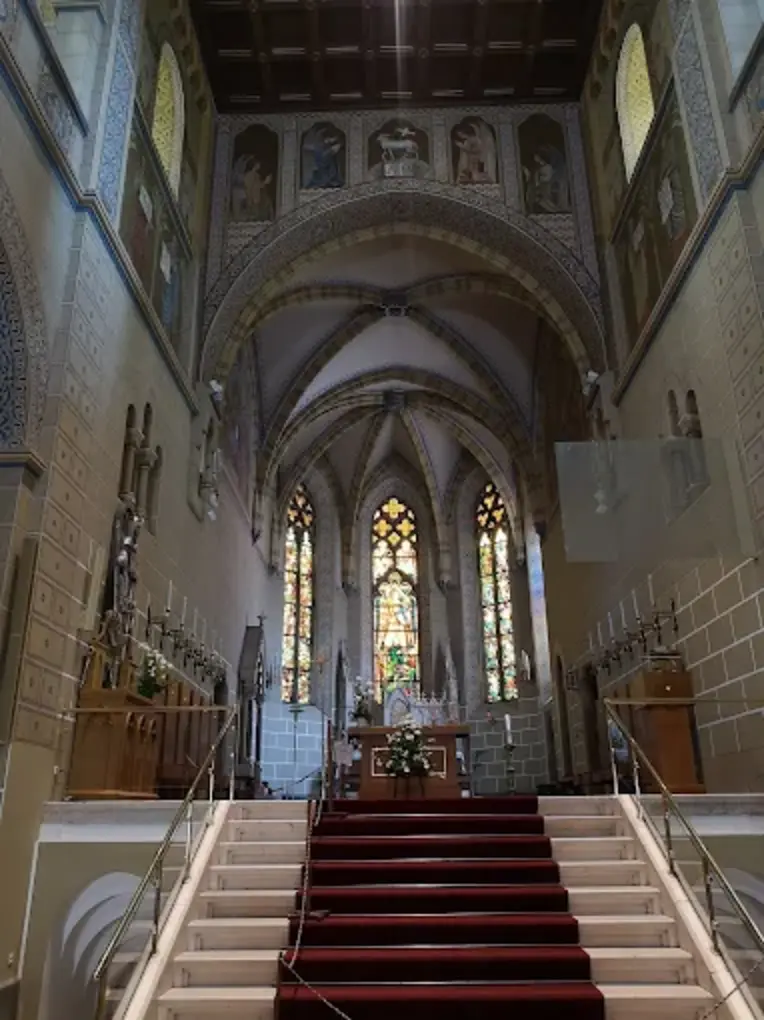
Expansions & Rebuilding
After King Stephen’s reign, the original church was expanded into a three-nave Romanesque cathedral with two towers. However, in 1380, a fire destroyed much of Veszprém, necessitating the reconstruction of the cathedral. They chose the Gothic design this time. The new structure was dedicated in 1400, and parts of the old crypt are still there today. A large portion of the cathedral was later destroyed during the Turkish occupation. Restoration didn’t really kick off again until the early 1700s. The church was given a Baroque makeover at that time. But even that was short-lived. Sándor Aigner, an architect, redesigned the entire structure in a Neo-Romanesque style from 1907 to 1910 in an effort to return it to its potential original appearance. The Gothic sanctuary and the old crypt were kept, but most of the Baroque features were taken out. The stained glass windows were destroyed during World War II, and Lili rkayné Sztehlo was the artist who created the ones we see today.
Recent Times
In 1981, Pope John Paul II gave the cathedral the title of basilica minor, making it even more important and official in the Catholic Church. A significant renovation project began in 2005. After the towers, the rest of the building was restored. With assistance from state funding, complete exterior and interior renovations had been completed by 2010. The cathedral was more than just a place of worship in the 1700s and 1800s; it also hosted concerts that featured works by Mozart, Haydn, and Beethoven. As a result, it also has some musical history. It became a metropolitan cathedral in 1993 and received Queen Gisela’s relics from the Niedernburg monastery. She’s seen as a blessed figure in the Catholic Church and still remembered as one of the most important women in Hungary’s religious history.
Architecture of St. Michael’s Cathedral Basilica, Veszprém, Hungary
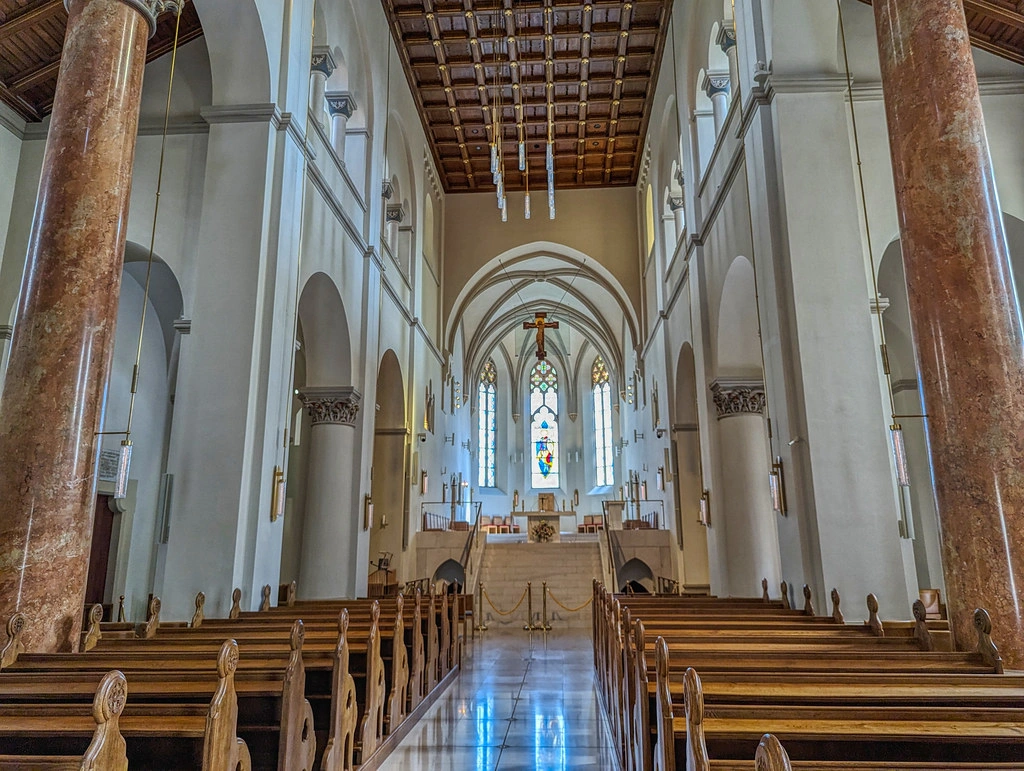
Architectural style: Gothic architecture.
Burials: Petar Berislavić, Juozas Žemaitis.
St. Michael’s Cathedral is Veszprém’s highest point, and it’s easy to see why it’s such a landmark from above. The cathedral has a commanding view of the city from its twin towers, which rise above the old castle district. From above, you can see the town’s winding streets, red rooftops, and historic walls surrounding it.
Inside the Cathedral
The coffered ceiling is the first thing you see when you enter the main nave. It gives the room a balanced, clean feel. The capitals of the columns that line the sides are exquisitely carved and replicate the original stonework from the rpád era. They were added during the substantial renovation that took place between 1907 and 1910. There are two altars in each side aisle. One is devoted to Saint George and the other to the Assumption of Mary on the left side (north). There are altars for Saints Anna and Imre on the right side, south. Antal Szirmay’s paintings of saints from the rpád dynasty Saint Gregory the Great, Saint Augustine, Saint John of Nepomuk, and the four evangelists adorn the walls. St. Stephen, Saint Margaret, Blessed Helena, Queen Gisela, Saint Joseph, and Saint Gellért are depicted in the stained glass windows, which add color and light. Throughout the course of the day, each one catches the sun in a unique way. The cathedral’s carefully preserved and displayed right forearm bone of Blessed Queen Gisela is one of the most precious relics.
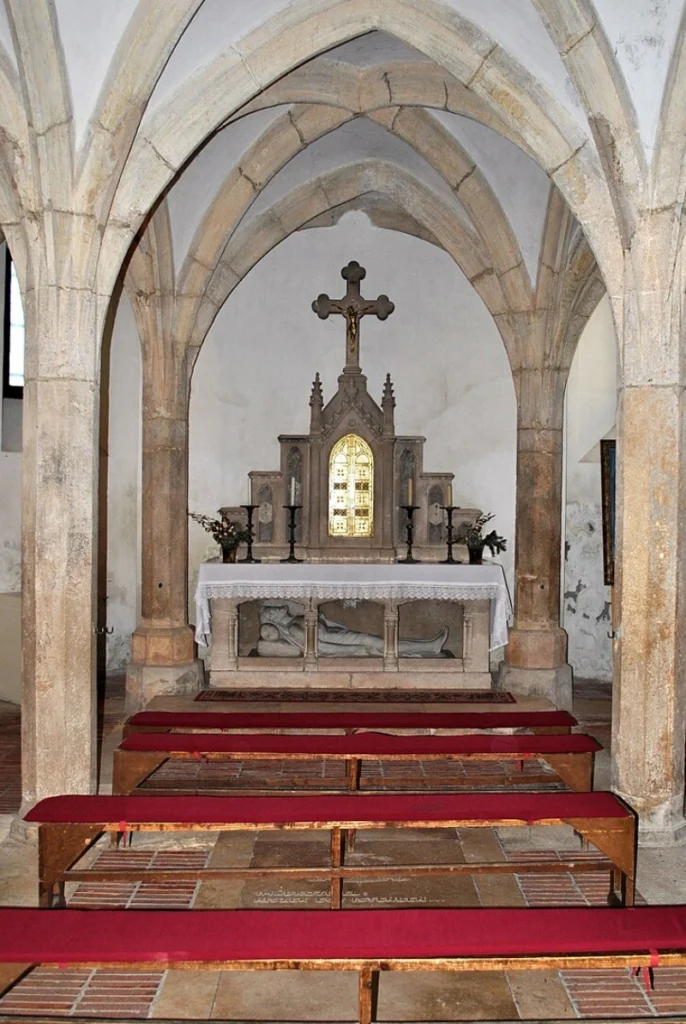
The Crypt and Tombs
The tombstones of Veszprém’s bishops, such as Laszló Banass and Péter Beriszlo, can be found in the crypt. The 1762-carved Baroque tombstone of Bishop Márton Biró Padányi can also be found in a small room that opens onto the main area. It is rich in history, elegant, and detailed.
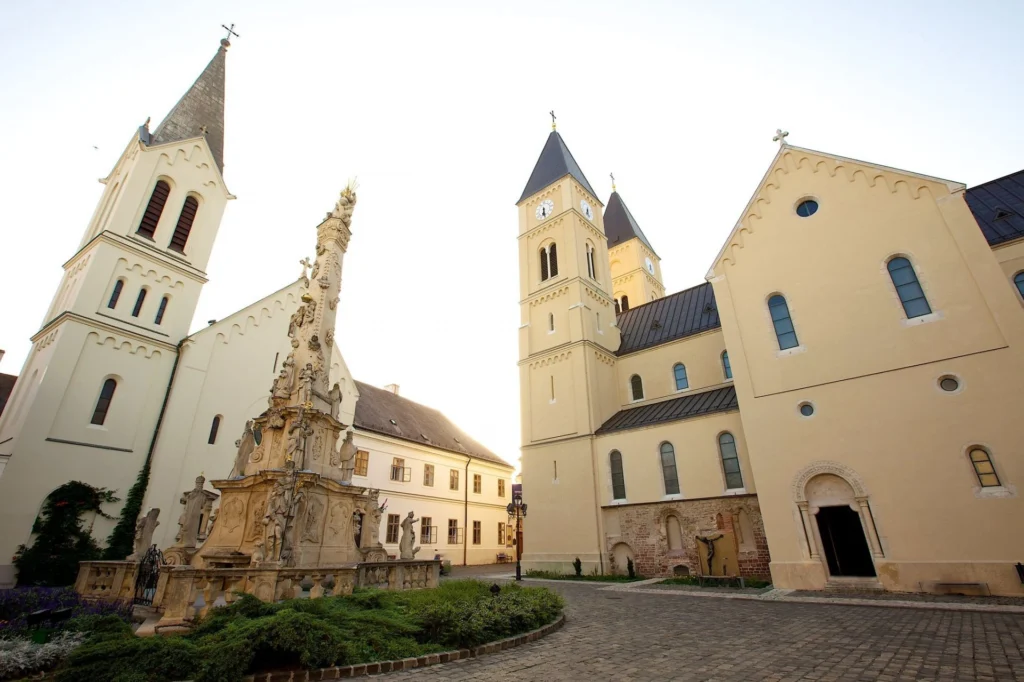
The Bells of St. Michael’s Cathedral
Today, there are five bells in the cathedral, four in the south tower and one in the north tower.
North Tower
The bell in the north tower is the Holy Trinity bell, and it’s massive. It weighs around 3,500 kilograms, has a 177 cm diameter, and its tone is a deep H0. It was cast by a bellmaker from Vienna named Franz Ulrich Scheichel in 1725. This bell is special for a couple of reasons. First, it is still the oldest large bell in all of Hungary. Second, the cathedral’s only original bell is this one. Many bells were taken and melted down during the wars; however, this one was too large to remove; it wouldn’t have even fit out of the tower. In addition, it is thought to be the oldest bell in Hungary, weighing more than 20 tons.
South Tower
The south tower houses the remaining four bells: St. Stephen’s Bell has a Disz1 tone, measures 125 centimeters in diameter, and weighs 969.5 kilograms. László Szlezák, a master bell-founder from Budapest who was known for his precision and craftsmanship, cast it in 1937. The Beöthy Bell, also known as the Saint Joseph Bell, is 110 centimeters in diameter and weighs 700 kilograms. It was built in 1974 by Lajos Gombos in the town of rbottyán and is tuned to Formula One. St. Szlezák also created Anne’s Bell in 1937, which is smaller, weighs 220 kilograms, has a diameter of 79 cm, and is tuned to C-sharp2. The Soul Bell is the smallest, weighing only 125 kilograms and measuring 63 centimeters across. Like the others, it was cast by Szlezák in 1937 and has a Disz2 tone. The cathedral actually had six bells before World War II, all of which were made by Szlezák in 1937. However, a larger 1,700 kg bell and a smaller 500 kg bell were requisitioned during the war. The cathedral continues to function without the 1,700-pound bell because it was never replaced.
Feast Day
Feast Day : 29 September
St. Michael’s Cathedral Basilica in Veszprém celebrates its feast day on September 29, in honor of St. Michael the Archangel, the cathedral’s patron. This day is an important religious event for the local community, marked by special masses and celebrations.
Church Mass Timing
Yet to Update
Church Opening Time:
Monday : Closed
Tuesday to Friday : 05:00 pm – 7:00 pm
Saturday : 10:00 am – 6:00 pm
Sunday : 8:30 am – 7:00 pm
Contact Info
Address : St. Michael’s Cathedral
Veszprém, Vár u. 27, 8200 Hungary.
Phone : +36 88 879 223
Accommodations
Connectivities
Airway
St. Michael’s Cathedral Basilica, Veszprém, Hungary, to Szentkiralyszabadja Airport, distance 16 min (8.2 km) via Almádi út.
Railway
St. Michael’s Cathedral Basilica, Veszprém, Hungary, to Veszprém Railway Station, distance between 5 min (1.7 km) via Fenyves u.



